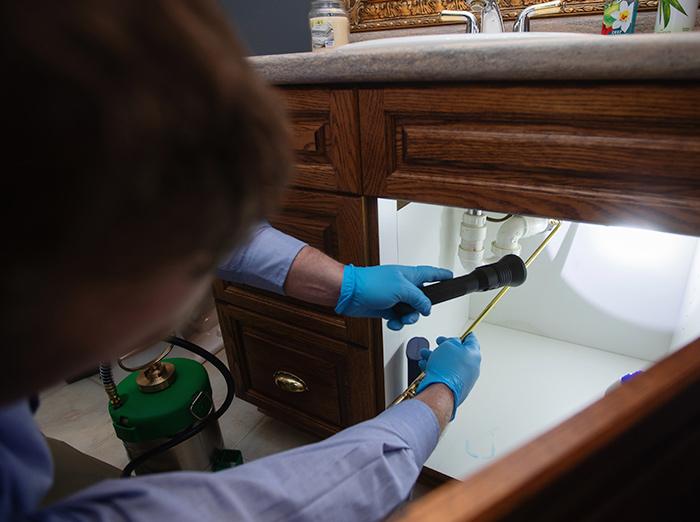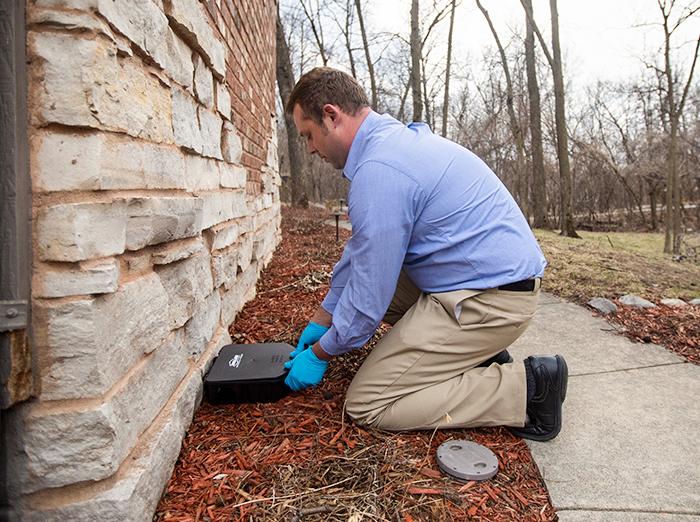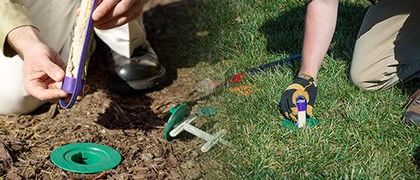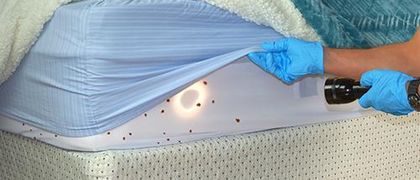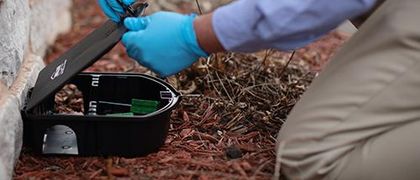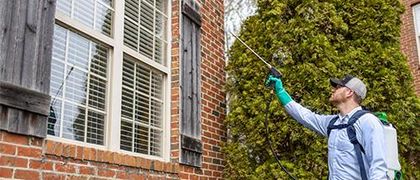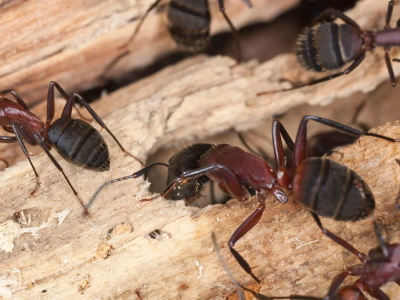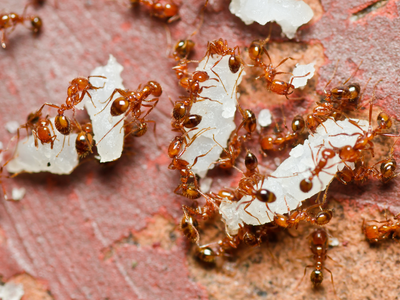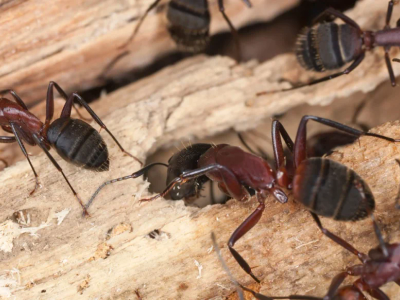There are a few reasons why carpenter ants, odorous house ants, and other types of ants are particularly troublesome in springtime. Understanding the factors that get ants moving, and knowing what lures them into your home is helpful when you are trying to keep them out. Join us today as we break down the facts and give you the information you need to prevent spring ant invasions. If you'd like to speak to a pest professional about an ant problem, remember that the Miller Pest & Termite team is here to help. Find out if you're in our Midwest service area.
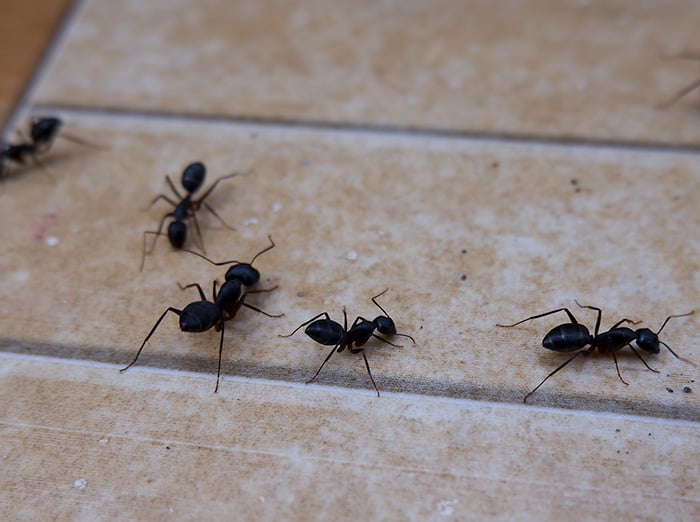
How spring temperatures impact ant populations
All ants need to get moving is the arrival of warmer weather. That happens every spring, and when those temperatures start to climb, ants vacate their winter hiding spots and show up in homes in Des Moines, Kansas City, Omaha, and across the Midwest. Kitchens and pantries are common places to find these nuisance pests but make no mistake—ants will not limit their range to that part of the house.
That leads us to the next reason why you'll see ants in your home in the spring.
How food attracts ants
Ants have a simple rule: they go where food is available. When an ant colony sends workers to look for food, a particular type of worker, called a scout, searches your home. If the scout finds food, it leaves a trail of pheromones that other ants follow, resulting in a swarm of ants. Many food sources could attract ants to your home, but one source that you might overlook is other insects and bugs. As spring weather triggers other pests to come inside, it is highly probable that it will also draw ants in if they are not already present. The aim is to keep all pests outside.
How spring rainfall gets ants moving
During the spring season, we often experience heavy rainfall, which is essential for providing the moisture ants need to survive. However, it can also lead to flooding in ant tunnels, forcing the ants to search for higher ground. Unfortunately, this higher ground can often be the interior of our homes or businesses.
To prevent ants from entering your home during rainy days, it's important to seal all gaps, cracks, and openings on the exterior of your home. This will help to make your house more secure against ant infestations.
New ant colonies develop in the spring
Not only do ants become active in the spring, but they also start growing their numbers. With warm weather and plenty of food, ant populations can grow faster. In fact, ant colonies send out winged reproductives to create new nests. If a nest has already been established indoors or outside, you may find these flying ants in your home. It is a warning sign that ants are too close, and it is time to do something about them.
Simple tips to keep ants out this spring
As we’ve already mentioned above, sealing off potential entry points is a great first step in ant prevention. But this isn't a complete solution because ants are tiny insects that are able to find entry points you can't see. Therefore, along with sealing your exterior, you need to remove exterior attractants to reduce the pressure. Fewer ants around your home will result in fewer entry attempts.
- Clean trash receptacles and remove trash weekly.
- Keep trash covered.
- Reduce exterior light.
- Replace white lights with yellow lights.
- Remove organic debris.
- Clean gutters and address other moisture issues.
- Trim plants, remove weeds, and get rid of unwanted grass in landscaping.
- Keep your interior clean and free of food debris.
- Keep food dishes covered when you leave them on the counter.
- Address leaking faucets.
- Replace worn-out weatherproofing materials.
The list of tips above is not comprehensive. Use them as a starting point to address attractants that bring ants near your home and encourage them to enter your home.
When to get professional ant control
You don't have to wait until ants are marching across your kitchen counters, scaling your walls, or raiding your pantry. In fact, it’s better to get ahead of ants and other house-infesting pests before they have the chance to settle in. Year-round home pest control services are the ideal way to accomplish just that!
If you’re interested in ongoing pest protection for your Midwest home, please consider signing up for Miller Guard. Check out the plan benefits below or contact us today to get more information and say goodbye to ant problems.
Ongoing Home Pest Control Recommendation
Miller Guard
Our signature Miller Guard pest control plan stands out in the industry by giving you Full Pest Coverage and Zero hidden fees. It is designed to eliminate and prevent insect and rodent problems by targeting pest entry and exit points for maximum effectiveness. It includes an initial premium interior application, exterior applications, web removal, and wasp nest removal.
- Ongoing Preventive Services
- 29 Pests & Services Covered
- Initial Premium Interior Application
- Exterior Applications
- Rodent Control
- Wasp Nest Removal
- Cob-Web Removal
- 1-Year Service Agreement
Starting at:
$4999A Month
Free Quote Or Call (515) 518-8864

Additional Miller Guard Details
Pests Covered: Asian Beetles, Boxelder Bugs, Carpenter Ants, Carpet Beetles, Centipedes, Clothes Moths, Drain Flies, Earwigs, Fleas, Fruit Flies, Grain Beetles, Hornets, House Ants, Indian Meal Moths, Mice, Millipedes, Pill Bugs, Rats, Roaches**, Silverfish, Spiders***, Stink Bugs, Wasps, Weevils, Yellow Jackets
Service frequency will vary based on geography. The Miller Guard program does not include the following pests: honey bees, flies, lice, dust mites, mosquitoes, exterior ticks, ornamental/turf pests, slugs, snails, termites, wildlife, birds, and brown recluse spiders.
- Pricing does not include initial fee
- Must have credit card on file
**American, German & Oriental
*** Venomous & Non-venomous


Get Help Now!



